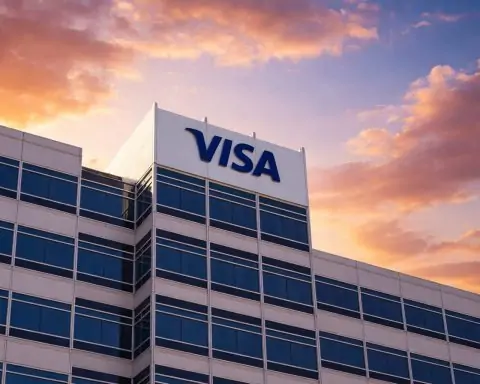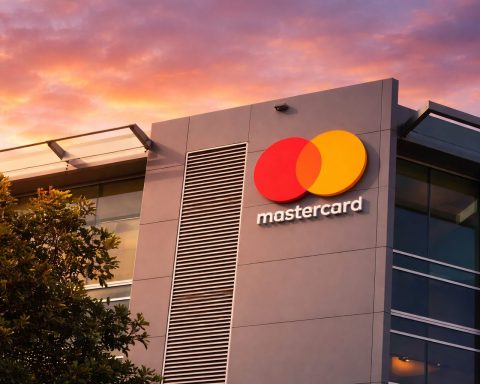On November 14, 2025, the fallout from the latest Visa–Mastercard swipe fee settlement is still unfolding – and the message from major financial outlets is clear: paying with a credit card is about to get more complicated, and the “golden age” of rich rewards may be nearing its peak. [1]
Drawing on coverage from The Wall Street Journal, CNBC and the Financial Times, along with fresh reporting and analysis published on November 13–14, this article explains what’s changing, why merchants and banks are fighting over it, and what it could mean for your wallet in the months and years ahead. [2]
Key Takeaways
- Visa and Mastercard have agreed to a revised settlement in a 20‑year antitrust battle over “swipe fees” – the charges merchants pay every time you use a credit card. [3]
- The deal would cut average credit card interchange fees by about 0.1 percentage point for five years and cap standard-card fees at around 1.25% for eight years, offering retailers modest but real savings. [4]
- In exchange, merchants would gain much more flexibility: they could refuse certain high-fee card categories, steer customers to cheaper payment methods and vary surcharges by card type. [5]
- WSJ warns that checkout will feel more fragmented – your preferred rewards card might earn great points but not be welcome everywhere, or come with higher surcharges at certain merchants. [6]
- The FT’s Lex column argues the “golden age of US credit card rewards may be at an end”, because those perks were ultimately funded by rising fees that retailers – and then consumers – pay. [7]
- On November 14, new commentary from industry groups, analysts and business media shows deep divisions: many merchants say the settlement is “smoke and mirrors”, while card networks insist it provides real flexibility and savings. [8]
What the New Visa–Mastercard Settlement Actually Does
The settlement stems from a massive U.S. class‑action case alleging Visa and Mastercard, along with major banks, inflated interchange fees and restricted competition in card processing. The litigation dates back roughly two decades. [9]
Core financial terms
According to court filings and company statements cited by Reuters and others, the revised agreement would: [10]
- Lower average credit card swipe fees by 0.1 percentage point (10 basis points) for five years
- Cap interchange on “standard” consumer credit cards at around 1.25% for eight years
- Preserve overall fee levels in the 2.0–2.5% range for many transactions, but with a slightly lower average
While those cuts may seem tiny, they could translate into tens of billions of dollars in aggregate savings for merchants over the life of the deal.
More power for merchants at the checkout
The truly disruptive part isn’t the headline dollar amount – it’s the new powers retailers would gain over which cards they accept and how they price them:
- Merchants could distinguish between broad categories of Visa and Mastercard products – for example:
- Standard consumer cards
- Premium / high‑rewards cards
- Commercial or corporate cards [11]
- They could decline some of those categories while still taking others on the same network (a significant loosening of the historic “honor all cards” rule). [12]
- They would have more flexibility to add surcharges that vary by card type, not just by “credit vs cash”. [13]
Importantly, debit cards are not covered by this settlement – these changes focus on Visa and Mastercard credit cards in the U.S. [14]
WSJ: Why Checkout Is “Set to Get a Lot More Complicated”
The first link you provided – a Wall Street Journal personal‑finance piece widely syndicated and summarized by other outlets – spells out how these structural changes could filter down to the register. [15]
Tiered pricing and card‑based surcharges
Under the current system, many merchants either:
- Bake swipe fees into their sticker prices, or
- Apply a single “credit card surcharge” regardless of which card you use
The settlement opens the door to granular tiered pricing, for example:
- $5.00 if you pay with debit
- $5.10 with a basic, no‑frills credit card
- $5.25 with a premium travel rewards card
Analysts quoted in WSJ‑linked coverage expect more visible fees and card‑based surcharges, especially in small businesses and sectors with thin margins such as independent cafés, restaurants and convenience stores. [16]
“We don’t take that card anymore”
Perhaps more jarring for consumers: merchants could pick and choose which card tiers to accept on each network.
Today, if a shop takes Visa, you can safely assume any Visa credit card will work. Under the proposed rules, some merchants might: [17]
- Accept standard Visa and Mastercard cards
- Refuse premium rewards cards that carry higher interchange fees
- Continue to accept co‑branded cards only if the economics are attractive
That means you could be declined not because of your creditworthiness, but because the merchant has decided your card is too expensive for them.
New visual markers on cards
To help both customers and merchants navigate this new landscape, the settlement would also require clearer visual indicators on cards so it’s obvious which fee “bucket” a given card falls into – though analysts warn that could take years to roll out across millions of cards. [18]
FT Lex: Is the “Golden Age” of Credit Card Rewards Ending?
Your third link points to a Financial Times Lex column titled “The golden age of US credit card rewards may be at an end” – a theme that has been echoed across markets and financial commentary over the last 48 hours. [19]
The column’s core argument, amplified in other business media, is that:
- Rewards were never truly “free”. They were funded by steadily rising interchange fees that merchants passed on through higher prices for everyone, including people who don’t use rewards cards. [20]
- Those fees have surged over the past decade. One industry analysis cited today notes Visa and Mastercard credit card swipe fees alone quadrupled from 2010 to $111.2 billion in 2024, with total credit and debit card fees hitting about $187.2 billion last year. [21]
- By forcing at least modest cuts and giving merchants the option to shun high‑fee cards, the settlement pressures the business model that pays for richer cash‑back and travel rewards.
Put simply: if merchants pay a little less, and especially if they start refusing priciest card types, banks have less incentive and less budget to offer outsized rewards.
CNBC & Other Outlets: What Consumers “Need to Know” Right Now
CNBC’s explainer on the settlement (second link you shared) lines up with the broader analytical consensus emerging this week: [22]
- This isn’t final yet.
- The agreement is proposed, not in force. A federal judge must sign off, and merchant groups are already lining up to challenge it in court.
- Savings for merchants are real but limited.
- A 0.1‑percentage‑point cut is meaningful at scale – especially for small businesses – but doesn’t radically shrink swipe fee revenue for banks and networks.
- Consumers won’t feel the change all at once.
- Even if the settlement is approved, implementation will be gradual: contracts must be updated, systems reconfigured and new card designs rolled out.
- Your rewards card isn’t dead – but it’s under pressure.
- Expect slower growth in perks, more careful targeting of generous offers, and potentially higher annual fees or reduced earning rates on some premium cards over time.
Fresh Coverage on November 13–14, 2025: What’s New Today?
Beyond the core WSJ/FT/CNBC articles, new pieces published on November 13–14 add important nuance about how the settlement may play out:
1. Fortune: “Credit card tier discrimination may be coming”
An analysis published yesterday and widely syndicated today warns that the deal could usher in “credit card tier discrimination”:
- Premium cards like flagship travel rewards products might face higher surcharges or outright rejection from fee‑sensitive merchants.
- Standard, lower‑fee cards could become the default “safe” option for broad acceptance. [23]
2. Merchant backlash intensifies
Several trade and business outlets, including convenience‑store and retail‑industry publications, are urging the court to reject the settlement: [24]
- One group calls the proposal “smoke and mirrors”, arguing the savings are too small and too temporary.
- The National Retail Federation and restaurant/retail associations complain that the deal doesn’t change how fees are set, or allow true competition in routing transactions over alternative networks.
- Articles published today highlight that swipe fees have become one of the largest operating expenses for many merchants after labor and rent.
3. Payments industry reaction: pros and cons
A detailed November 13–14 breakdown in the payments trade press lists eight key pros and cons of the pact: [25]
Pros include:
- Guaranteed fee reductions and caps for several years
- Clearer rules and more flexibility to manage card acceptance and surcharges
- Potentially stronger negotiating power for smaller merchants
Cons include:
- Fee cuts that are small relative to total swipe costs
- Complex implementation, which could confuse both staff and customers at checkout
- No fundamental change to Visa/Mastercard’s market power or network rules
What This Could Mean for Your Credit Card Rewards
Even if the settlement only modestly reduces total fee revenue, the shift in power at the checkout could change which cards remain attractive to issuers and merchants.
Likely trends experts are watching
Based on reporting from WSJ, FT, payments analysts and card‑industry commentary: [26]
- Pressure on ultra‑premium cards
- If more merchants balk at accepting high‑fee super‑premium products, banks may:
- Raise annual fees further to maintain perks
- Limit large signup bonuses
- Focus on affluent customers and travel‑centric spend where acceptance remains high
- If more merchants balk at accepting high‑fee super‑premium products, banks may:
- Resilience of “plain vanilla” cards
- Standard, low‑fee cards benefit from the 1.25% fee cap, making them more attractive for retailers to keep accepting broadly.
- Issuers may lean into these as mass‑market workhorses, with simpler reward structures and modest but stable benefits.
- Co‑branded and store cards in the spotlight
- Big partners (airlines, hotels, large retailers) have leverage to renegotiate economics to keep their cards attractive and accepted.
- Smaller co‑brand programs might face a tougher time if merchants start scrutinizing fees more closely.
- More segmentation and fine print
- We could see a wider gap between top‑tier cards and mainstream cards in terms of acceptance, rewards rates and fees.
- Issuers are likely to adjust terms and conditions more frequently as the economics evolve.
How to Prepare as a Consumer
You don’t have to overhaul your wallet today. But given the direction of travel, there are some practical steps that can help you stay flexible if – and when – checkout rules tighten.
1. Carry at least one low‑fee “backup” card
Because merchants may start refusing certain high‑fee cards, it’s wise to:
- Keep one no‑annual‑fee, non‑premium Visa or Mastercard available
- Make sure it’s from a major issuer and widely accepted today
These standard cards are more likely to fall under the capped interchange rates, making them attractive for merchants to keep accepting.
2. Diversify how you pay
Don’t rely on a single premium rewards card. Consider maintaining:
- Two different networks (e.g., one Visa, one Mastercard, possibly also Amex/Discover where accepted)
- A debit card for merchants that dislike credit fees
- A mobile wallet (Apple Pay, Google Pay, etc.) that can quickly switch between cards at the terminal
This way, if one card draws a surcharge or is declined, you can pivot instantly.
3. Watch for new signs and surcharges at your favorite merchants
Over the next 12–24 months, pay attention to:
- Window stickers and checkout signage explaining which cards are accepted
- Receipts showing surcharges for particular cards or for credit transactions in general
- New “cash discount” programs that effectively penalize certain card payments
Small businesses and sectors like restaurants, salons and independent retailers may be the early adopters of these changes. [27]
4. Read rewards program updates carefully
As networks, banks and merchants jostle over economics, expect more:
- Updates to earning rates and bonus categories
- Tweaks to airport lounge access and partner perks
- Adjustments to minimum spend requirements for welcome bonuses
Those emails and letters you usually ignore might start to include meaningful changes to your card’s value.
What Happens Next?
From here, the timeline looks roughly like this: [28]
- Court review and possible objections
- A federal judge will review the settlement for fairness.
- Retailers and trade groups will likely file formal objections, arguing the deal doesn’t go far enough.
- Implementation phase (if approved)
- Networks and banks adjust fee schedules and contracts.
- Merchants re‑evaluate which cards they will accept and how they’ll price different payment types.
- Issuers decide how to tweak rewards structures and card portfolios in response.
- Gradual shift in day‑to‑day reality
- Big chains may quietly adjust pricing and acceptance policies.
- Smaller businesses may make more visible changes – posted surcharges, card restrictions, or cash‑discount programs.
- Consumers gradually learn which cards work best where – and which now come with strings attached.
Bottom Line
As of November 14, 2025, nothing in your wallet has changed overnight: your cards still swipe (or tap), your points still post, and most merchants still take your favorite rewards products.
But beneath the surface, the Visa–Mastercard settlement is rewiring the incentives that have shaped the modern credit card landscape:
- Merchants gain more power to say “yes” or “no” to specific card types and to pass on costs more transparently.
- Banks and networks face fresh pressure to justify high‑fee, high‑reward cards.
- Consumers will encounter more complexity at checkout – and perhaps gradually less generous rewards over time.
For now, the smartest strategy is simple:
Keep your payment options flexible, pay attention to surcharges and acceptance signs, and be ready for a world where how you pay matters almost as much as what you buy.
References
1. www.reuters.com, 2. fortune.com, 3. www.reuters.com, 4. www.reuters.com, 5. www.livemint.com, 6. www.livemint.com, 7. www.ft.com, 8. www.convenience.org, 9. www.reuters.com, 10. www.reuters.com, 11. www.reuters.com, 12. www.wsj.com, 13. www.livemint.com, 14. www.livemint.com, 15. www.livemint.com, 16. www.livemint.com, 17. www.wsj.com, 18. www.livemint.com, 19. www.ft.com, 20. www.ft.com, 21. www.marketscreener.com, 22. www.paymentsdive.com, 23. fortune.com, 24. www.convenience.org, 25. www.paymentsdive.com, 26. www.wsj.com, 27. www.livemint.com, 28. www.reuters.com










